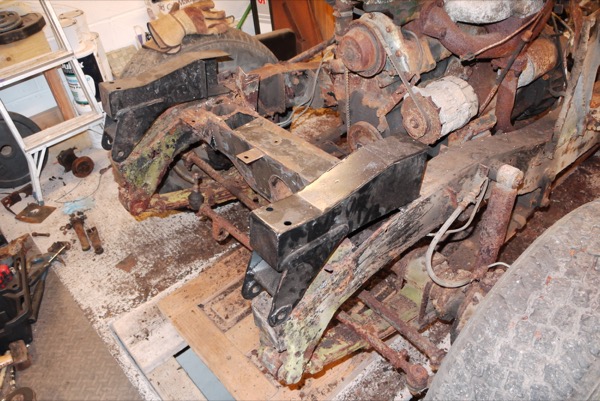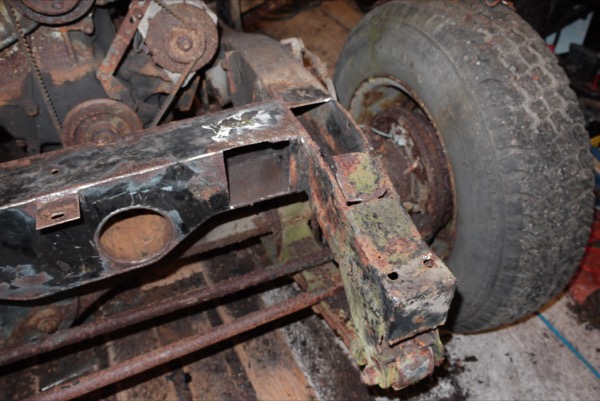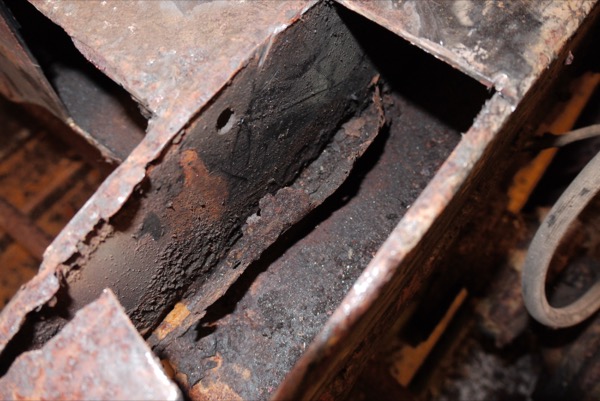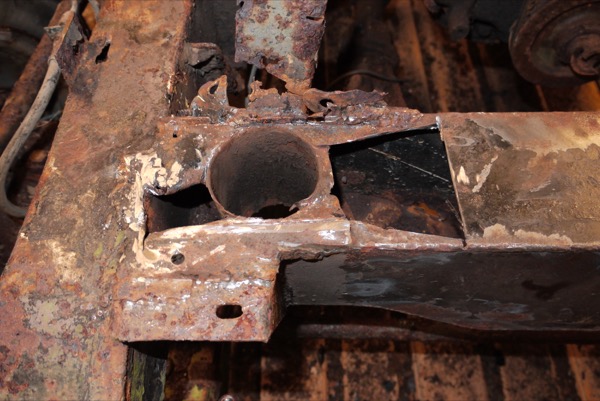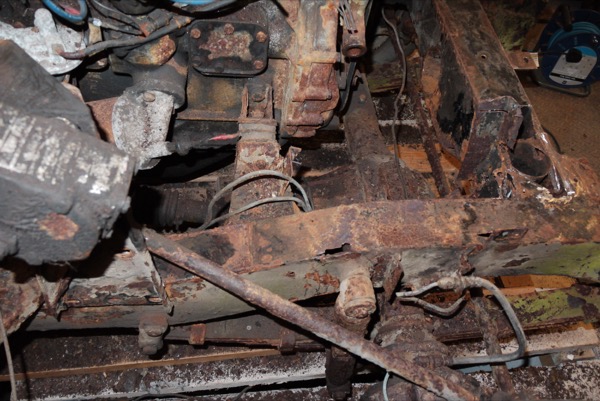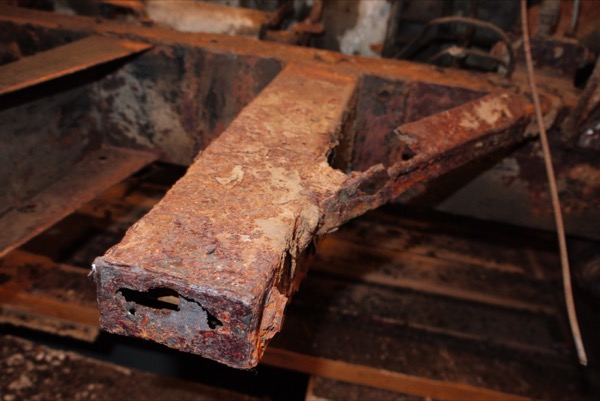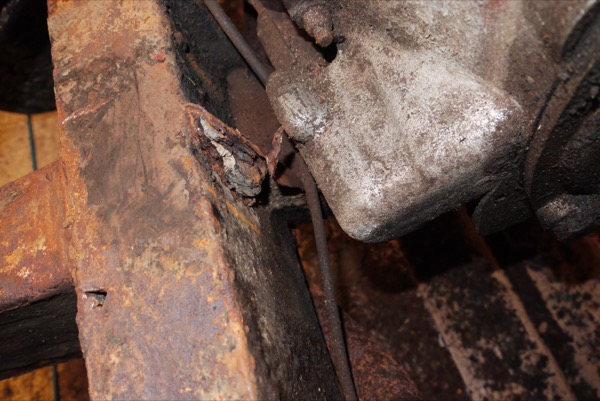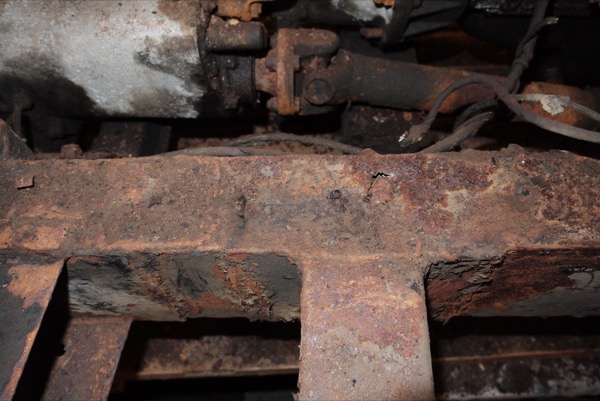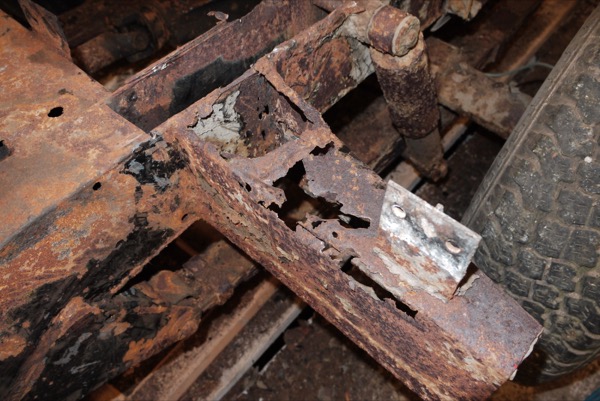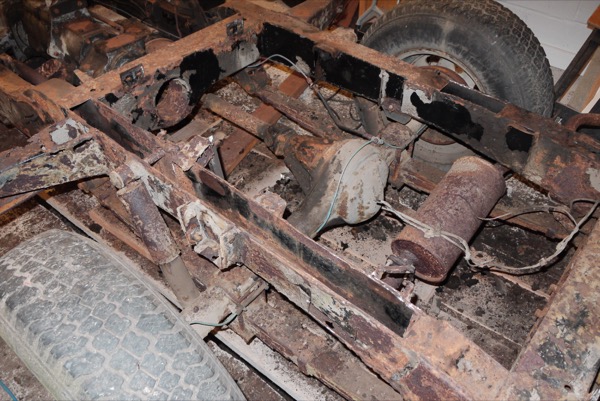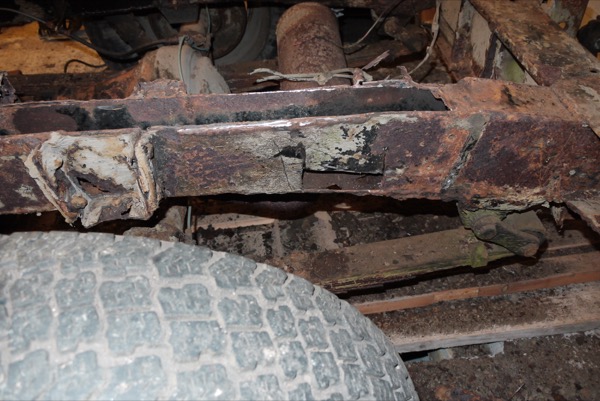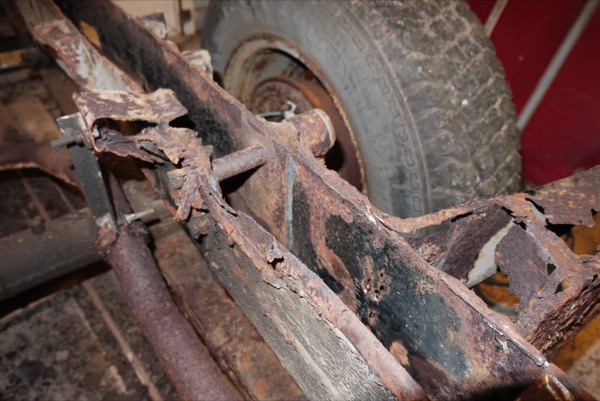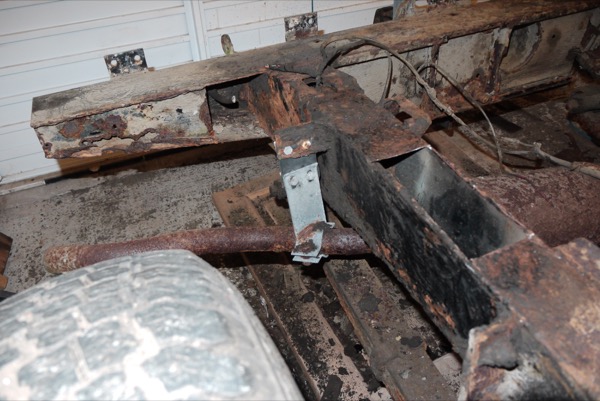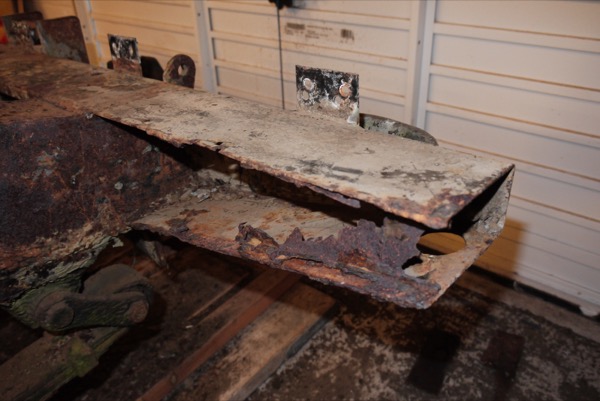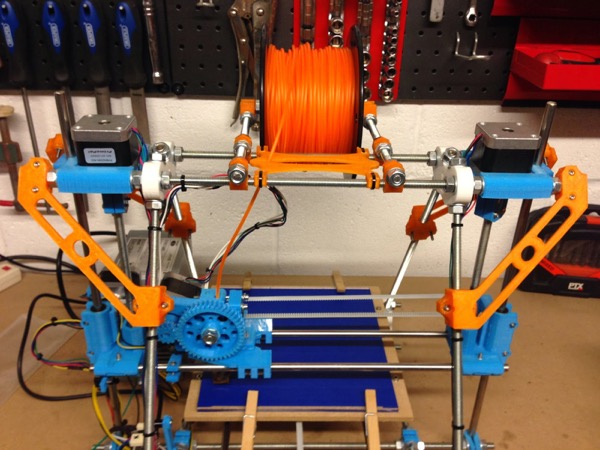Land Rover Restoration
Chassis Assessment
All the bodywork is stripped off and we’re down to a rolling chassis with an engine. When I bought it, it looked solid enough for a 20 year old vehicle. Unfortunately, it wasn’t possible to inspect the tops of the chassis rails and I didn’t poke around quite enough in the places I could see to spot some potential problems. Read on for all the gory details …
Starting at the front, the spring hangers are completely shot: rusted through in structural areas, patched with flimsy sub-1mm sheet and badly splayed - they’ve got to go. Before stripping the chassis down, this was the one repair I knew about and they’re easy enough to replace so I’ve had a pair of replacement items for a while.
The front crossmember has some visible issues and some others which weren’t visible until I really dug into it.
I removed a section on the front-right which was rusted through and that provided access to the inside which revealed quite bad internal corrosion where the crossmember meets the nearside rail.
On the left side of the front crossmember, the steering relay plates appear to have been replaced (badly) and there is also a small hole inside the relay tunnel which is going to be awkward to replace. There’s also some heavy surface flaking inside the PTO tunnel which hasn’t blown through but will need treating.
There are some repairs to the offside top rail by the engine which seem to have been professionally plated with the right sized stuff, but some unrepaired spots in the same region have now rusted through. It looks like the old repairs were done in-situ, however, and the one by the offside bulkhead support caught that in the weld so I’ll need to break the weld and clean it up again as the support needs to come off.
The bulkhead outriggers are a bit borderline: offside probably a bit too far gone but the nearside isn’t quite so bad. Considering how difficult it is to get the bulkhead off to replace them, however, I’ve decided to replace both and keep on top of the maintenance. There is also some plating to be done on the nearside chassis rail’s side.
The gearbox crossmember is looking pretty ropey on the sides. I may be able to weld in some repair plate but I really need to get the engine out and give it a full inspection. I’m prepared for the possibility of needing to replace it.
As with the repairs further forward, there are some rail top repairs which look to be well done in the cab area’s main rails but there are also some new holes which need plating.
The rear tank outrigger and its nearside companion need replacing; the nearside one is completely rotten and will also need quite a big plate on the rail’s side around it.
Saving the best for (almost) last, the nearside chassis rails under the tub had been badly repaired with the same sub-1mm (and structurally unsound) tin sheet as the front spring hangers. This was only partially welded in place and no attempt was made to cut out the rot before being applied. The result is really nasty and wasn’t visible until the tub was removed. I can only surmise this was done with the rear tub still in-situ in an ill-conceived effort to deceive the MOT man. Cutting back to good steel has revealed the entire top of the nearside chassis rail has corroded badly, not really breaking through but very thin. I’ve cut it all out to be replaced, and revealed a couple of spots on the sides and underneath which will also need attention.
The top of the offside rail has a similar problem, but no repairs and no holes so I’m going to repair what needs repairing in the same way.
I didn’t notice when I bought it, but the rear crossmember has been replaced. The work is a bit messy but it does, at least, look solidly attached. The back plates have rusted badly but I should be able to cut what’s left of them out and weld in some replacements without too much trouble.
Finally, there are various small attachment plates which have rotted away. This is a quite common problem but it should be easy to fab some new ones and attach them.
I’ll admit, at first glance things don’t look promising. I won’t deny there’s a lot of work to be done but it looks a lot worse because of the amount of surface rust and some superficial horridness - the bulk of the work is actually patching and outrigger replacement which should be fairly straightforward. Ultimately, I don’t think the chassis is a complete write-off - it’s just going to take a while. Even if it costs me a few hundred quid in replacement parts, steel plate and consumables, that’ll still be at least a quarter of the price of a new chassis (which I definitely can’t afford right now) and will hopefully last me at least 5 years with the right amount of care. It should also be good fun and good practice!
Posted on 01 February 2015
